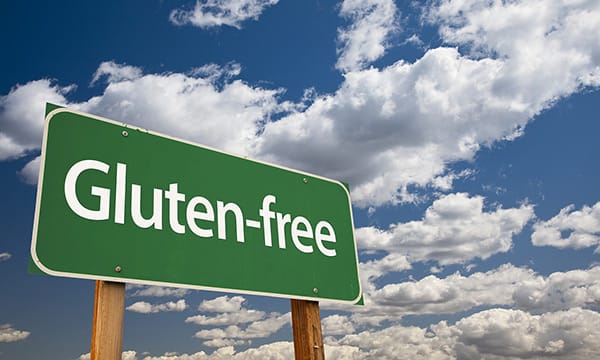After a few decades of demonizing fatty foods, diet-conscious North Americans have identified gluten as the new enemy, blaming it for everything from skin rashes and acid reflux to autoimmune disorders. As the grocery aisles fill with gluten-free products, and flat-tummied celebrities lobby to ban the bagel, Atlantic Canadians are struggling to separate the wheat from the chaff.
“It’s important to understand the impact of gluten on health and to reach a consensus about the way we describe the clinical conditions related to it,” says pediatric gastroenterologist Dr. Mohsin Rashid, an associate professor in pediatrics and medical education at Dalhousie University in Halifax, NS. “Terms like celiac disease, gluten sensitivity and gluten intolerance are often used interchangeably when, in fact, they are very different.”

‘Identifying the three main problems related to gluten’
After a few decades of demonizing fatty foods, diet-conscious North Americans have identified gluten as the new enemy, blaming it for everything from skin rashes and acid reflux to autoimmune disorders. As the grocery aisles fill with gluten-free products, and flat-tummied celebrities lobby to ban the bagel, Atlantic Canadians are struggling to separate the wheat from the chaff.
“It’s important to understand the impact of gluten on health and to reach a consensus about the way we describe the clinical conditions related to it,” says pediatric gastroenterologist Dr. Mohsin Rashid, an associate professor in pediatrics and medical education at Dalhousie University in Halifax, NS. “Terms like celiac disease, gluten sensitivity and gluten intolerance are often used interchangeably when, in fact, they are very different.”
Three main problems related to gluten
According to Dr. Rashid, there are three main types of problems arising from people’s reactions to gluten, a protein found in wheat, rye and barley. The first is an allergy to wheat, which often has symptoms such as skin rashes and difficulties with bowel function. “This is similar to a severe allergic reaction to other foods like peanuts,” says Dr. Rashid.
The second, and most well studied problem, he says, is celiac disease, a permanent, autoimmune condition in which the body’s immune system turns against itself and attacks the bowels. While there is no cure for this disease, a gluten-free diet is the magic bullet for avoiding symptoms such as bloating, cramping, diarrhea, flatulence and abdominal pain.
“Celiac disease is a genetic problem,” explains Dr. Rashid, who is the medical advisor to the Nova Scotia Chapter of the Canadian Celiac Association and a volunteer on the Medical Advisory Board at the national level. “Not everyone with the genetic marker will develop it,” he says, “but many of the children I see have family members who have the disease.”
According to the Canadian Digestive Health Foundation, more than 330,000 Canadians are presently diagnosed with celiac disease. “But, that number is just the tip of the iceberg,” says Cynthia King-Moore, a pediatric dietician at the IWK Health Centre. “The number would be much higher, but some people with symptoms haven’t had a blood test to confirm a diagnosis and aren’t receiving medical attention.”
Gluten sensitivity is the third disorder related to gluten consumption. “A better name for this would be non-celiac gluten sensitivity,” says Dr. Rashid, “in order to distinguish it from celiac disease, which is also characterized by a sensitivity to gluten.”
After consuming gluten, people with non-celiac gluten sensitivity report symptoms including headaches, bowel dysfunction, exhaustion, and tingling of fingers and toes. “We don’t know much about this condition yet,” says Dr. Rashid. “There are no antibodies in the blood and no genetic markers, so diagnoses are made by excluding other possibilities such as celiac disease. It’s not even clear if this condition is permanent.”
Celiac disease and gluten sensitivity on the rise
What is clear is the increasing prevalence of both celiac disease and non-celiac gluten sensitivity. “I’ve seen a dramatic increase in the number of people interested in avoiding gluten or reducing it from their diets,” says dietician Brenda MacDonald, the manager of food services for the IWK Health Centre. “For the first time, we are offering a low gluten diet in the cafeteria. We even have a gluten-free toaster to avoid the danger of cross contamination by crumbs that contain gluten.
In addition to the growing number of people who have celiac disease and non-celiac gluten sensitivity, there’s also an almost fad-like preoccupation with gluten by people who have no medical reason to eliminate it from their diets. “These are people who believe that wheat, barley and rye are not healthy choices,” says Cynthia King-Moore. “They have a preference for avoiding gluten, but that’s very different from having celiac disease. People who have celiac disease have to be gluten-free. They have no choice.”
More gluten-free choices
Whether a health need or a health preference, gluten-free foods now fuel a billion dollar production industry, with General Mills alone boasting more than 300 gluten-free food products. “There is so much more choice now than there was just a few years ago,” says MacDonald. “At the IWK we deal with a Lunenburg County company that makes wonderful gluten-free products such as cookies and muffins. They sell like gluten-free hotcakes.”
Despite the increased production of gluten-free products by major food brands, a recent study in Halifax showed they still cost two to three times more than similar products that contain gluten. “The problem,” says MacDonald, “is that in order to produce gluten-free items, a plant can’t also produce goods that contain gluten. The price of that restriction is passed on to the consumer.”
The good news is that prices will continue to drop as more large companies join the cause and more people perceive benefits in eliminating or reducing gluten. “Even for those who can tolerate gluten, a well-balanced, gluten-free diet may in some cases be preferable and healthier because it excludes eating junk food and dining at fast food restaurants,” says Dr. Rashid.
Other’s medical practitioners, like Wisconsin cardiologist and author William Davis, see even greater benefits in a gluten-free diet. In his bestseller Wheat Belly, Dr. Davis attributes a host of adverse health conditions to the genetically modified wheat in processed foods and argues for a gluten-free diet as the key to weight loss and restored health.
When going gluten-free:
• avoid products high in sodium choose products high in fibre and nutrients
• sprinkle ground flaxseed on gluten-free cereals to add fibre
• off-set low fibre gluten-free foods by eating lots of lentils, legumes, fruits and vegetables
• limit the consumption of high-calorie gluten-free treats
• don’t forget that natural foods such as fruits and vegetables have always been free of gluten
